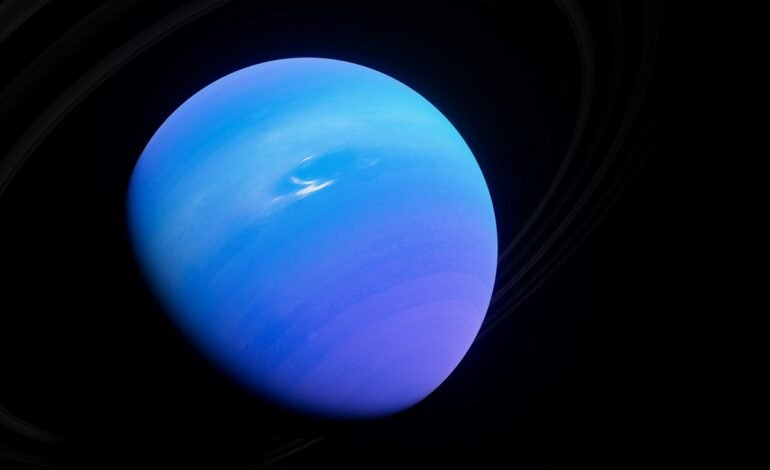Uranus emits more heat than it receives from Sun, study found

Astronomers once thought that Uranus was a distant star. In the 18th century it was finally universally accepted as a planet but to this day, continues to puzzle astronomers and subvert their expectations. Now NASA’s research has revealed something even weirder about the gas giant.
Uranus spins on its side, making its pole face the sun, it rotates in the opposite direction to the other planets except Venus. And data from Voyager 2’s flyby in 1986 has hinted that it is unusually cold inside, challenging traditional ideas about planetary formation and evolution.
“Since Voyager 2’s flyby, everybody has said Uranus has no internal heat,” said Amy Simon, a planetary scientist at NASA’s Goddard Space Flight Center in Greenbelt, Maryland. “But it’s been really hard to explain why that is, especially when compared with the other giant planets.”
These projections came from a single close-up measurement. “Everything hinges on that one data point,” said Simon. “That is part of the problem.”
Now, advanced computer modelling has had a different look. Simon and the team of scientists found that it does in fact generate some heat. Their findings were published in the Monthly Notices of the Royal Astronomical Society journal.
Internal heat can be calculated by comparing the energy a planet gets from the sun to what it releases into space through reflected light and heat. The other gas giants, Saturn, Jupiter, and Neptune, all emit more than they receive, meaning that extra heat is generated from within, mostly from the high energy processes that formed them billions of years ago. The less heat a planet receives, the older it is.
Uranus stood out because it appeared to give off an equal number to what it receives, suggesting it generated none of its own. Some suggested that it could mean that the planet is much older than the others and has cooled off entirely. Others hinted that a giant collision may have blasted out all of its heat. But nothing could explain it.
Researchers have discovered that it actually releases around 15% more energy than it gains from the Sun, suggesting that it does generate its own hear, albeit less than Neptune which emits double that which it receives.
This not only helps us understand more about the planets in the solar system, but it can help researchers better understand planets outside the solar system, exoplanets. Many of these are around the same size as Uranus.
Stay tuned to EyeOnLondon for the latest news and expert opinions.
Follow us on:
Subscribe to our YouTube channel for the latest videos and updates!
We value your thoughts! Share your feedback and help us make EyeOnLondon even better!









